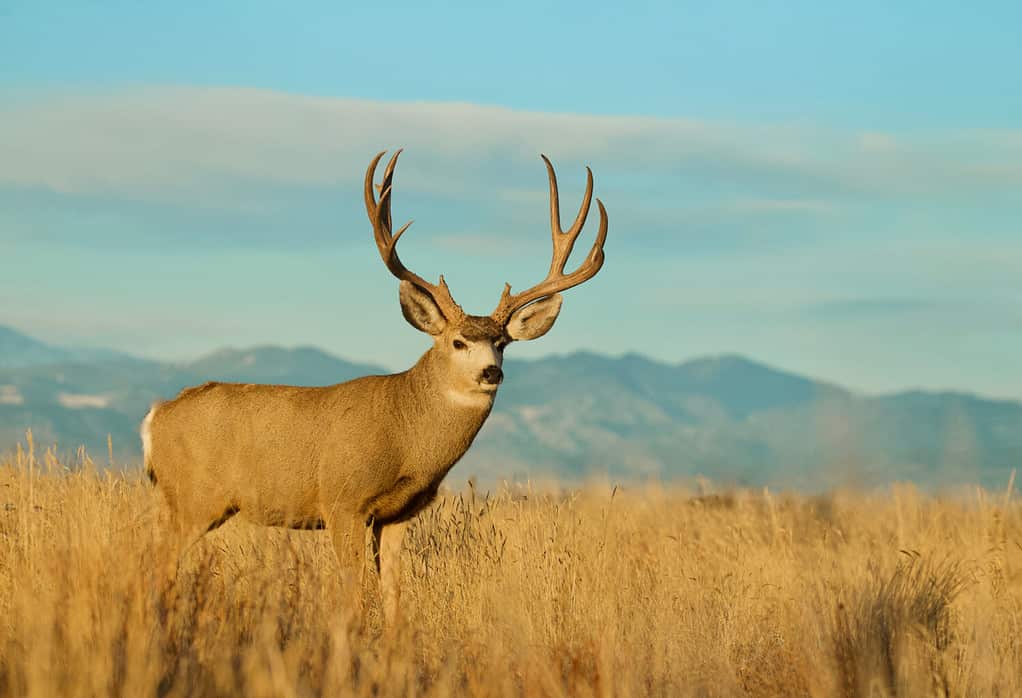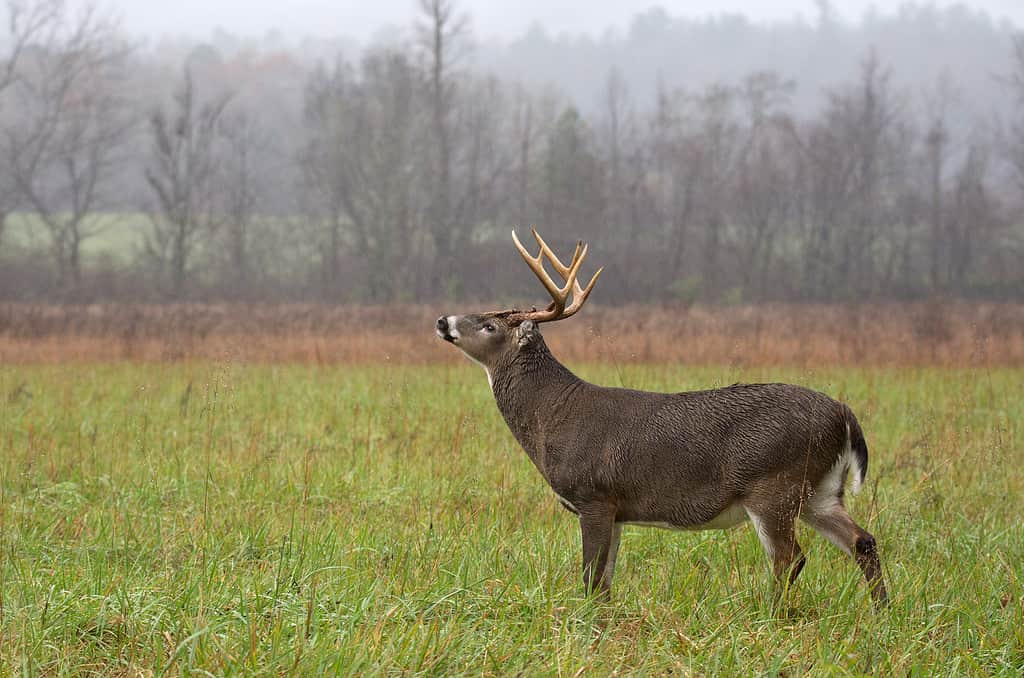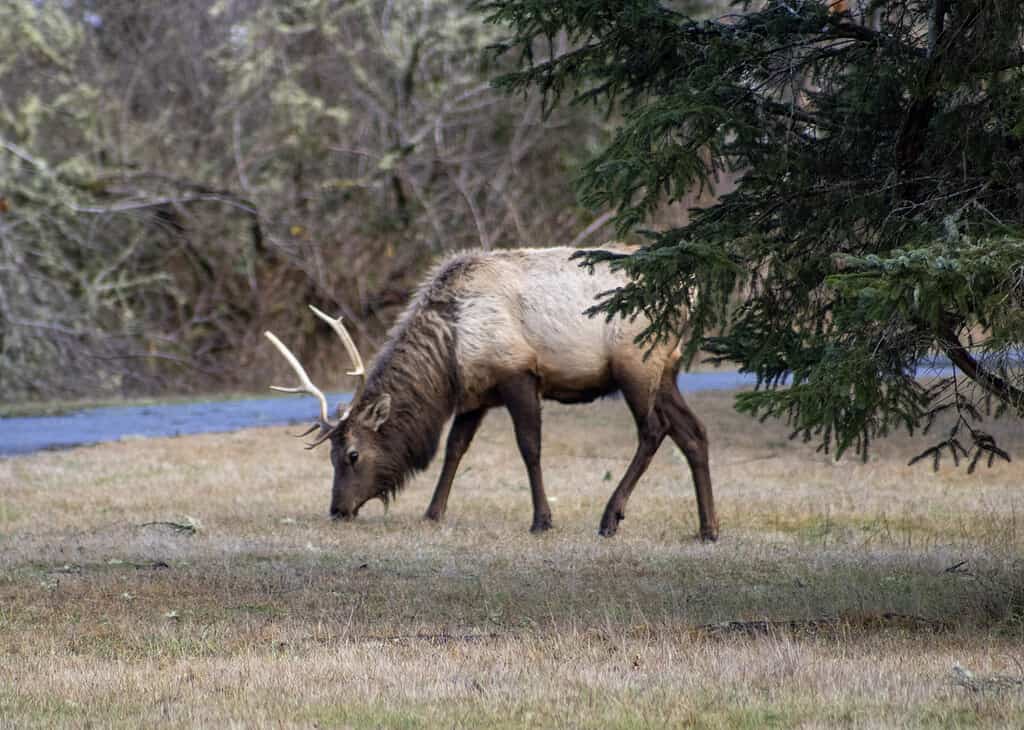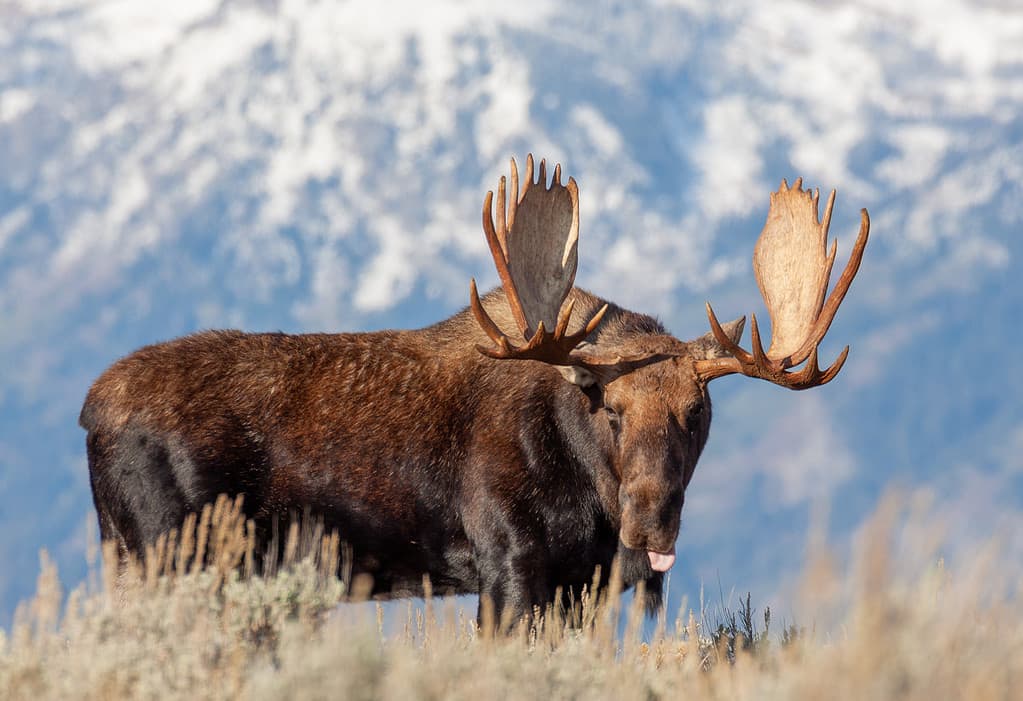Discover the 5 Largest Deer Roaming U.S. Forests
Deer are the only hoofed mammals that can grow giant antlers. Furthermore, they are part of the scientific family Cervidae. There are many different species of deer, about 30 kinds. These include the mule, white-tailed, reindeer, elk, and moose. These are some of the largest deer roaming U.S. forests. Deer are indigenous to South America, North America, northern Africa, Asia, and Australia. Furthermore, people have also introduced them in New Zealand, Australia, and some other areas. They live in various habitats but favor tundras, deserts, swamps, and forests.
These graceful creatures have long, slender legs, short tails, and large ears. In addition, they usually have smooth, brown fur and often have white areas on their throats and chests. However, some have a shaggy coat, generally in cold weather. The smallest deer, the South American pudu, is about 12 inches, and the largest deer, the moose, can be more than 7 feet. All deer are omnivores and eat only plants such as twigs, bark, and grass. Additionally, they live in family groups, though males sometimes wander off to spend time alone.
1. Mule Deer

©Tom Reichner/Shutterstock.com
Mule deer get their name from their large mule-like ears. These deer are brownish-gray and have white behind them, with a small white tail with a white tip. The male mule deer will grow antlers in the summer, which shed and fall off in the spring. Furthermore, these antlers form a split in the main branch, creating two branches with two or more tines.
The mule deer have adapted to living in the desert by only being active in the early morning and evening when the weather is cooler. In addition, they have adapted by eating a wide range of items to meet their nutritional needs. They can occur throughout desert areas as long as there is sufficient vegetation to eat and hide in. These clever deers will move to higher elevations in the warmest parts of the summer and lower elevations in winter. However, they also like to live in wooded hills and forests.
Mule deer occur throughout the western United States and are not currently a threatened or endangered species. Luckily, many states have provided land to maintain the habitats crucial to the deer. These deer have a varied diet that can include:
- Mesquite leaves and beans
- Fairy duster
- Grasses
- Shrubs
- Buck bush
- Cat claw
- Jojoba
The mule deer is one of the largest deer roaming U.S. forests. However, they still have a few predators, which include bobcats, wolves, bears, eagles, mountain lions, coyotes, and humans. If they manage to avoid these predators, they have a lifespan of 9 to 11 years in the wild and even longer in captivity. Female mule deer are generally smaller than males. Fully-grown mule deer can be as tall as 7 feet and weigh up to 330 pounds.
2. White-Tailed Deer

©iStock.com/EEI_Tony
Even though white-tailed deer are the smallest of the North American deer family, these deer can weigh between 110 and 300 pounds, making them one of the largest deer roaming U.S. forests. These deer have chestnut coats in summer, which fade to a dull gray color in the colder months. Male white-tailed deer are called bucks and are easily identified in summer and fall because they have enormous antlers that fall off in winter. Furthermore, these deer get their name from the white underside of their tails that are visible when they wag them. Also, they have smaller ears than mule deer.
These deer occur in North America from southern Canada to Central America, and their range reaches Bolivia. White-tailed deer prefer open woodland but sometimes live on the edges of urban areas and farms. Their habitats can include:
- Areas along streams and rivers
- Mixed woodlands
- Farms
- Forests
- Burned shrub fields
These deer will feed on various vegetation depending on what is available in their habitat. However, in eastern forests, they will eat buds and twigs of shrubs, birch, aspen, poplar, sassafras, and maple. If these are scarce in winter, they will eat conifers. White-tailed deer are agile and can reach speeds of up to 30 miles per hour.
Female white-tailed deer are highly protective of their fawns. However, they will leave them to look for food, but they will hide them for about four hours at a time. These clever fawns will lay flat on the ground with their necks stretched out, making them well hidden while waiting for their mothers. Furthermore, these animals are usually solitary, especially in summer. Male antlers are not used as weapons against predators but during mating season to fight other deer to breed with females. Then, these antlers are shed from January to March and start growing again in the spring.
3. Reindeer

©karlumbriaco/iStock via Getty Images
Belonging to the deer family along with moose and elk, reindeer are also sometimes called caribou. Furthermore, all reindeer grow antlers, and female reindeer are the only ones that grow antlers in the deer family. These animals occur in Asia, Europe, and the far northern regions of North America. They inhabit forests, treeless plains of the far north, and the Arctic tundra. Reindeer have thicker bodies and shorter legs than other deer family members and can weigh up to 700 pounds. Also, they have broad hooves and thick brown, white, or gray coats.
These deers live together in herds and travel far from their summer to their winter homes. They are known to eat plants, grasses, and plant matter called reindeer moss. Reindeer will breed in autumn, and the males will often fight each other for a mate. When the females give birth, it is usually only to one baby. Lastly, many people, such as the Sami of northern Europe, will keep herds of reindeer to pull sleds over the snow. Also, they use these deer for their skins, milk, and meat.
4. Elk

©Michael Bryant-Evans/iStock / Getty Images Plus via Getty Images
The elk is the biggest subspecies of red deer, also known as wapiti. These animals occur in Central Asia’s high mountains and North America. Also, they are a member of the deer family, and the word elk comes from the ancient Germanic word meaning “hart” or “stag.” However, in Europe, the most common name for a moose is elk.
North America boasts a healthy elk population. These animals occur in various habitats, from the Yukon in northwestern Canada to northern Mexico. Also, they occur from Vancouver Island to Pennsylvania. Elk favor prairies, swampy valleys, deciduous forests, and rainforests. These deer are exceeded only in size by the moose, and male elk can average 840 pounds. However, size can vary between populations and south to north. The biggest bulls can weigh up to 1,100 pounds. Compared to that, bulls from southern California average around 240 pounds. Male elk shed their antlers yearly, and they are regrown.
Elk are herbivores. They tend to forage in the early morning and late evening and eat things like small plants, new growth on trees and shrubs, and grasses. In addition, they form large groups to protect themselves from predators such as coyotes, bears, and wolves. Furthermore, male elk have a high-pitched call known as a bugle. On rare occasions, a female will bugle. Female elk have a gestation period of 255 days, and they will give birth in early summer to one white-spotted calf.
5. Moose

©equigini/iStock via Getty Images
Moose are the biggest of the deer family and one of the largest deer roaming U.S. forests. They are known for their big heads and large antlers. Also, they are called elk in Europe. These animals occur in the Rocky Mountain region of the United States, Alaska, and Canada. However, they inhabit the northern forests of Asia and Europe. Moose prefer living near lakes, ponds, and rivers.
These long-legged animals are heavy, and a fully grown male can weigh up to 1,400 pounds. In addition, they have thick dark brown fur that can look almost black or reddish. Only male moose grow antlers that can be more than 5 feet across. Every year, a male will shed its antlers, and they will regrow. When these antlers start growing again, they are covered with a protective layer called velvet, which will eventually rub off. Also, Moose are good swimmers and have a varied diet, including water plants like water lilies and pondweed, bark, twigs, herbs, and grasses. Lastly, these animals have good hearing but not good sight.
Summary Table
| Largest Deer by Weight | Weight |
|---|---|
| Mule Deer | 330 pounds |
| White-Tailed Deer | 300 pounds |
| Reindeer | 700 pounds |
| Elk | 1,100 pounds |
| Moose | 1,400 pounds |









